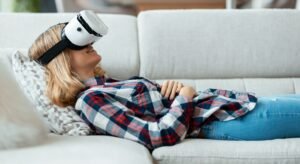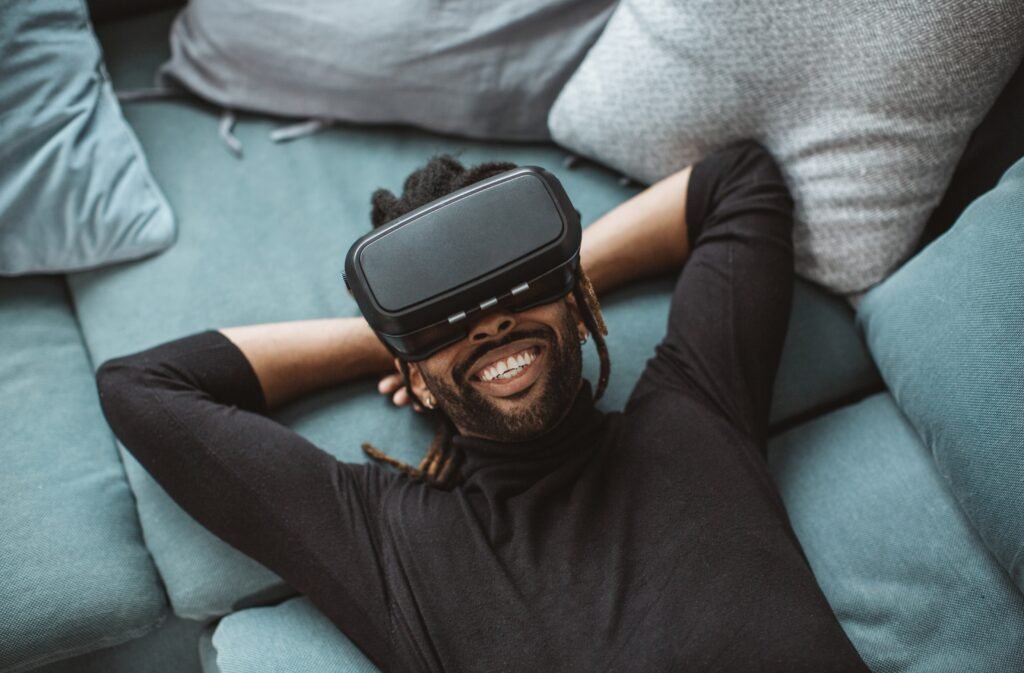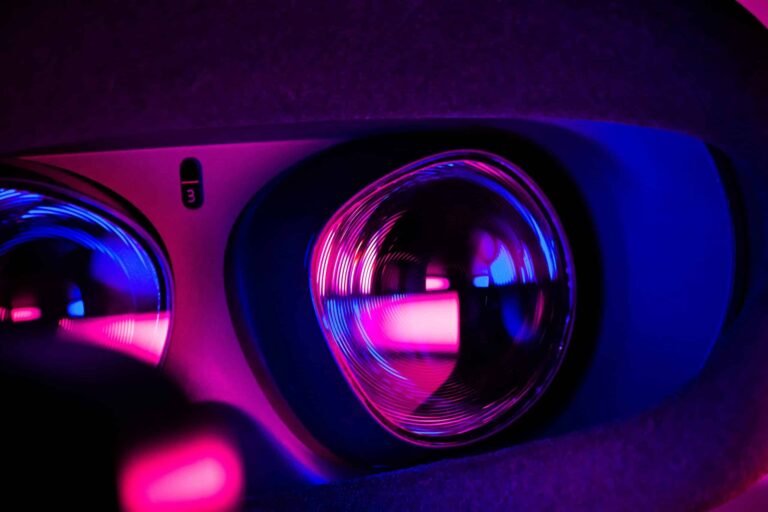We are increasingly exposed to screens in our daily lives. These screens are often criticized for their detrimental effect on our sleep. However, contrary to popular belief, virtual reality headsets can help you (re)discover better sleep. Let us explain.
Virtual reality against sleep disorders.
In 2015 study by the INSV/MGEN sleep disorders . The same study also showed that 73% of us wake up at least once a night for about 30 minutes, and that 25% of 25-34 year olds are drowsy during the day.
It is in this context that virtual reality can play a role in improving our sleep . For example, consider the Sana Sleep virtual reality headset treats insomnia . By positioning the headset over your eyes, it collects data about your pulse and respiration . From this data, the headset sends back light and sound stimuli . As your brain reacts, the stimuli adapt until you fall asleep .

Researcher Massimiliano de Zambotti, a sleep neuroscientist at SRI International in Menlo Park, California, is working on adolescent bedtime routines . By combining virtual reality with breathing techniques before bed, he has shown that using virtual reality increases sleepiness and decreases alertness at bedtime . These preliminary studies, dating from 2020, have shown great promise in combating bedtime anxiety, which is linked to insomnia.
Finally, another application of virtual reality to help treat sleep disorders involves lulling yourself to sleep . A team of researchers at RMIT in Melbourne, in collaboration with artists, has created a virtual reality headset . The device combines ambient music with kaleidoscopic images controlled by your brain using an electroencephalogram (EEG). Depending on the waves received, the music and images change. As a result, this animation helps you drift off to sleep.
Virtual reality for better sleep in the future.
Start-ups are launching with the goal of helping you recover the benefits of a night's sleep in twenty minutes , thanks to virtual reality ! Research that, if successful, would open up new possibilities in the treatment of sleep disorders.
Source: Photo by James Yarema on Unsplash
What dream is on the agenda tonight?
Finally, who hasn't ever wanted to be able to control their dreams ? Your wish may be about to come true thanks to the work carried out by the teams at the Dream and Nightmare Laboratory, at the Sacré-Cœur Hospital in Montreal .
Researchers have succeeded in inducing dreams in participants in the experiment. First, they experience a flight simulation using a virtual reality headset . The goal is for their brains to then recreate this experience during sleep . In a separate room, on a monitor, researchers observe brain activity in order to wake the participant at the opportune moment and retrieve their dream experience . The aim of this experiment is to see if it is possible to induce a specific dream and to observe how the desired dream is subsequently recreated by our brains during sleep.
Today, virtual reality has become an essential tool in the treatment of many disorders related to brain activity . Sleep disorders are no exception. Although the applications are still in their infancy, the results appear promising . The world of sleep, so difficult for us to understand, may have found its key to decoding it: virtual reality .



